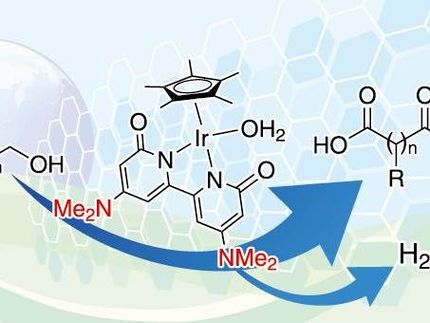Natural Insecticide Re-Created in the Lab
Success after 22 years of research: synthesis of azadirachtin
Advertisement
Twenty-two years of dedicated research has finally resulted in success: In the journal Angewandte Chemie, a British team headed by Steven V. Ley at the University of Cambridge reports the first synthesis of azadirachtin, a natural compound that stops predatory insects from feeding.
Plants have a variety of defense mechanisms to deter insect attack. Investigation of these mechanisms often allows researchers to discover molecules with interesting biological properties. One such compound is azadirachtin, which was first isolated from the neem tree (also known as the Indian lilac) in 1968. The name of this natural product is derived from the botanical name of the plant, Azadiracta indica. Azadirachtin is a highly active substance that inhibits the development of the larvae of a broad spectrum of destructive insects but is harmless to mammals and beneficial insects, such as bees and ladybugs.
The structure of this complicated molecule was published in 1985, after a long, intensive research effort, but all attempts to make this compound have thus far been unsuccessful. The difficulty of the synthesis stems in part from the 16 stereocenters in the molecule, the complex pattern of oxygen-containing functional groups, and a conformation and reactivity that are strongly dependent on intramolecular bridging hydrogen bonds. The compound is highly light sensitive and can readily undergo structural rearrangement.
Ley and his team have been interested in solving the problem of the synthesis of this compound for 22 years. Their endurance has now been abundantly rewarded. The key steps in making this molecule involve a Claisen rearrangement and a novel radical cyclization reaction.
"While we have been working on this complex synthesis," says Ley, "we have also developed a number of new methods that are of general use for the construction of other important molecules." Ley expects that using the successful synthetic route will allow the development of simpler derivatives of azadirachtin that are stable and may lead to a new generation of environmentally acceptable insecticides.
Original publication: Steven V. Ley et al.; "Synthesis of Azadirachtin: A Long but Successful Journey / A Relay Route for the Synthesis of Azadirachtin"; Angewandte Chemie International Edition 2007, 46, No. 40.
Other news from the department science
Most read news
More news from our other portals
See the theme worlds for related content
Topic world Synthesis
Chemical synthesis is at the heart of modern chemistry and enables the targeted production of molecules with specific properties. By combining starting materials in defined reaction conditions, chemists can create a wide range of compounds, from simple molecules to complex active ingredients.

Topic world Synthesis
Chemical synthesis is at the heart of modern chemistry and enables the targeted production of molecules with specific properties. By combining starting materials in defined reaction conditions, chemists can create a wide range of compounds, from simple molecules to complex active ingredients.
































































